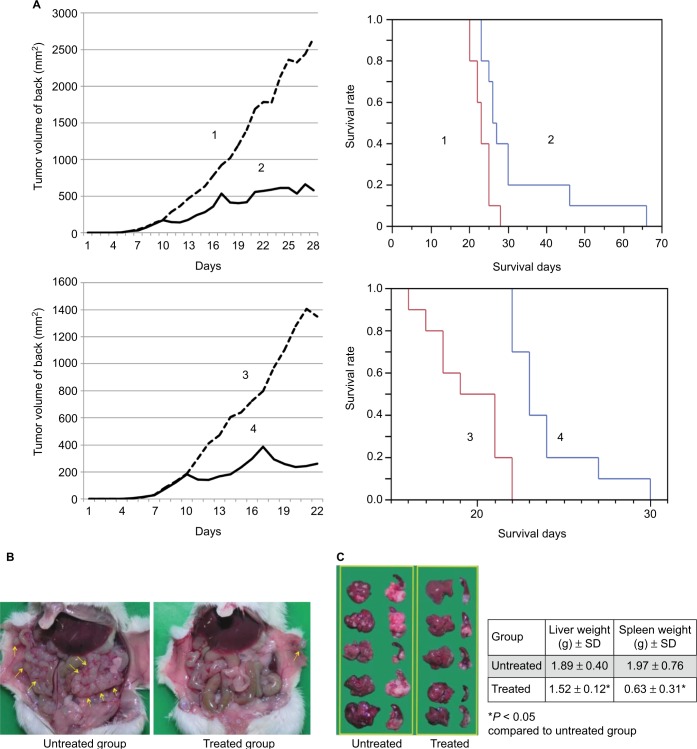Figure 2.
(A) HF10 prolonged the survival of metastasis model mice. We established four groups and each group included 10 mice. 1, liver metastasis, control group; 2, liver metastasis, HF10-treated group; 3, peritoneal metastasis, control group; 4, peritoneal metastasis, HF10-treated group. HF10-treated mice received an injection of 1 × 107 PFU of virus into the subcutaneous antitumor on days 10, 17, or 24 after antitumor implantation. The subcutaneous antitumor volume in the treated group was significantly lower than that in the untreated mice (1 vs 2: P = 0.0013; 3 vs 4: P = 0.0045). The survival rate of the treated mice was significantly higher than that of the untreated mice (1 vs 2: P = 0.0039; 3 vs 4: P < 0.0001). The survival rate of peritoneal metastasis–treated mice was significantly higher than that of peritoneal metastasis–untreated mice. (B) HF10 treatment reduced the number of abdominal antitumor nodules. HF10 (1 × 107 PFU) was injected into the subcutaneous antitumor 10 days after antitumor implantation, and the mice were sacrificed 17 days after antitumor implantation. Arrows point out metastasis antitumor nodules inside abdominal cavity. (C) HF10 decreased liver and spleen weights in liver and peritoneal metastasis models. In mice bearing liver metastases, HF10 (1 × 107 PFU) was injected into the subcutaneous antitumor 10 days after antitumor implantation. The mice were sacrificed 17 days after antitumor implantation. Antitumor’s number in addition to liver and spleen weights were analyzed.
Abbreviations: PFU, plaque-forming unit; SD, standard deviation.

